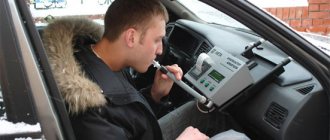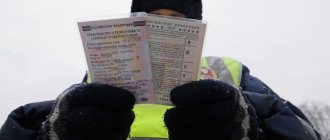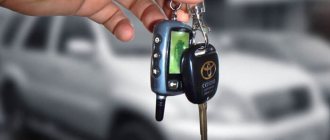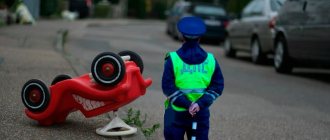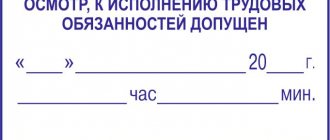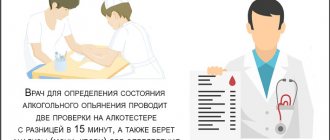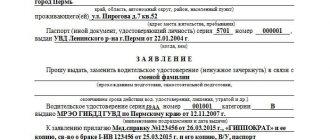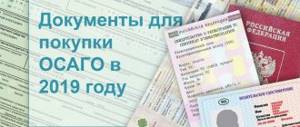As stated in the law
The driver's alcohol intoxication test is carried out in accordance with the following regulatory documents:
- Traffic rules Clause 2.3.2. This document establishes the obligation to undergo a medical examination at the request of a traffic police officer. Refusal to conduct research is not permitted by the rules;
- Code of Administrative Offenses, the document specifies penalties for driving motor vehicles while intoxicated (Article 12.8) and sanctions that can be applied to a driver who refuses to undergo an examination (Article 12.26). In both cases, the driver is punished with a fine of 30,000 rubles and a penalty of deprivation of rights for 1.5 - 2 years;
- the Criminal Code, according to which punishment is imposed in the event of injuries or deaths (Article 264);
- Order of the Ministry of Internal Affairs No. 664. The document establishes regulations for the implementation of supervision in the field of compliance with traffic rules;
- Government Decree No. 475, which approves the rules and procedure for conducting examinations and recording the results of the examination;
- Order of the Ministry of Health No. 933n, which also approves the procedure for conducting a medical examination, as well as provides samples of documents resulting from the examination and the rules for filling them out.
In accordance with paragraph 2 of the Government Decree, a driver examination must be carried out in the following situations:
- when a traffic police inspector detects primary signs of intoxication;
- when making a decision to initiate an administrative case under Article 12.24 of the Code of Administrative Offenses (violation of the rules for operating motor vehicles, resulting in mild or moderate harm to the injured party);
- when initiating a criminal case in connection with a traffic accident that resulted in serious harm to the health of the victims or death.
The main primary signs, upon detection of which an employee of the State Traffic Inspectorate has the right to direct the driver to undergo an examination, are (Article 3 of the Government Resolution):
- the presence of an alcoholic odor from the driver’s breath, detected during a conversation;
- instability, change in standard posture when operating a car;
- speech dysfunction (presence of unrelated or slurred statements);
- change in skin color on the face (hands). The skin may be excessively pale or have traces of redness;
- behavior that is inappropriate for the given situation (inappropriate).
I. General provisions
1. These Rules establish the procedure for examination for the state of alcoholic intoxication and registration of its results, referral for a medical examination for the state of intoxication, medical examination for the state of intoxication and registration of its results of a person who drives a vehicle of the corresponding type (hereinafter referred to as the driver of the vehicle).
2. The driver of a vehicle in respect of whom there are sufficient grounds to believe that he is in a state of intoxication, as well as the driver in respect of whom a determination has been made to initiate a case for an administrative offense provided for Article 12.24 of the Code of the Russian Federation on Administrative Offences.
(as amended by Decree of the Government of the Russian Federation dated November 18, 2013 N 1025)
3. Sufficient grounds to believe that the driver of a vehicle is intoxicated is the presence of one or more of the following signs:
a) the smell of alcohol on the breath;
b) instability of posture;
c) speech impairment;
d) a sharp change in the color of the skin of the face;
e) behavior that is inappropriate to the situation.
Which service conducts
A test for the presence of alcohol in the driver’s body can be carried out:
- by a traffic police inspector directly at the scene of detecting signs of intoxication or recording a traffic accident with victims;
- by traffic police officers at the nearest stationary post, if appropriate equipment is available, or in the nearest mobile laboratory;
- doctors (narcologist, paramedic, therapist) in a medical institution that has the appropriate license.
All of these methods can be used equally if appropriate certified equipment and additional disposable devices are available.
The driver, at his own request, may request an examination not at the post or scene of the incident, but at a medical institution. This aspect will not be considered a refusal to undergo examination and will not be punished under Article 12.26 of the Administrative Code.
Where do they make it?
Each inspection location has its own nuances.
On the spot
At the scene of detection of an offense, the study is carried out using a breathalyzer - a special device that examines the air exhaled by the driver.
This type of examination can only determine the presence of alcohol in the driver’s body, and is absolutely unsuitable for detecting drug intoxication.
For testing, you can only use a certified breathalyzer that has passed the next verification. Documents on certification and verification must be with the traffic police inspector and presented upon request of the driver.
In addition to the breathalyzer, it is necessary to have disposable “tubes” (popularly called) through which air enters the device.
The results of the test are recorded in writing in a special document - an act, the form of which is established by Appendix 2 to the Order of the Ministry of Health.
A driver is considered to be intoxicated if the device shows more than 0.16 ml of alcohol in 1 liter of exhaled air, which corresponds to 0.3 ppm.
The established deviations from zero values are aimed at eliminating the error of the measurements, and in no case at all at allowing the consumption of alcohol during or before the operation of motor vehicles.
An examination at the scene of detection of signs of an administrative offense must be carried out in the presence of two witnesses or using video recording of the process.
If the driver’s examination is carried out in the presence of witnesses, then the full name, residential address and signatures of the witnesses must be reflected in the act recording the results of the examination.
At the traffic police
A test for the presence of alcohol in the driver’s body can also be carried out at the post or at the nearest traffic police department.
As in the previous case, exhaled air is subject to examination, and a breathalyzer with disposable “tubes” is used for testing.
The test results are recorded in the report.
In the hospital
The examination can be carried out in a stationary medical center and a mobile laboratory.
Laboratories equipped on the basis of vehicles are subject to certain requirements (Order of the Ministry of Health):
- the height of the laboratory interior must be at least 1.85 m;
- there must be a rubber track in the cabin for testing;
- Interior lighting must be at least 100 lux;
- the laboratory must freely accommodate two people (a doctor and a patient), as well as various equipment for conducting research, including express tests.
In a medical facility (mobile laboratory), an examination of a driver suspected of intoxication can be carried out:
- a breathalyzer, that is, by determining the amount of alcohol in exhaled air;
- by conducting medical tests on the driver's urine or blood.
The breathalyzer test is performed two times:
- immediately upon the driver’s arrival at the medical facility;
- 15 - 20 minutes after the first study.
If the test results differ significantly or do not show the presence of alcohol in the exhaled air, then the driver is sent for testing.
Urine is usually used to test the driver for alcohol intoxication, and blood is used to test for the presence of drugs.
The presence of alcohol in the blood or urine in an amount of more than 0.3 ppm indicates that the driver is intoxicated.
The report on passing a medical examination in a medical institution is drawn up by the doctor on duty, who may be a paramedic, therapist or directly a narcologist. The presence of witnesses and video recording are not required in this situation.
The deprivation of rights for alcohol intoxication in 2021 for the first time is described in the article: deprivation of rights for alcohol intoxication for the first time.
Read about the amnesty for those deprived of their rights for alcohol intoxication in 2021 here.
What to do in case of disagreement?
If the driver does not agree with the test results, the traffic police officer is obliged to conduct a medical examination.
To conduct an examination, it is necessary to express disagreement with the test results in the protocol and request a medical examination. A referral for a medical examination for intoxication is documented in a protocol in the presence of two witnesses. Traffic police officers are required to escort the driver to the place of medical examination (to the appropriate medical institution). If the medical examination does not reveal intoxication, traffic police officers are obliged to escort the driver and back to his vehicle.
If you need urgent advice from a car lawyer, call: +7 (903) 508-29-11 (from 8.00 to 23.00, in emergency cases you can call around the clock).
The publication was prepared by Honored Lawyer of the Russian Federation, lawyer Viktor Aleksandrovich Grigoriev
Did you like the article? Share on social networks:
The procedure for testing for alcohol intoxication
So, a medical examination in a medical institution is carried out in the following order:
- after the driver arrives (he can come independently or be brought by a traffic police inspector), a form is filled out indicating the full name, date of birth, residential address and passport details (the document can be replaced with a driver’s license if the person is brought to the examination by a traffic police officer) of the person being examined;
- a specialist visually examines the subject for signs of intoxication, traces of injections, and also conducts tests for coordination (Romberg test), pupil reaction to external stimuli (Taschen test) and attention or concentration (Schulte test);
- using a breathalyzer, an air sample is taken, which shows the presence/absence of alcohol in the vapor;
- after 15–20 minutes, the breathalyzer examination is performed again;
- the results of the first and second tests are entered into a report that will be issued after the study;
- if the driver has obvious signs of intoxication or the results of two tests are very different from each other, then the driver is tested for a chemical-toxicological study, the results of which are also recorded in the report. To avoid the possibility of falsifying test results, certain requirements are imposed on urine: compliance with the temperature regime (at least 32º), which indicates the freshness of the material being tested, and the presence of certain substances, indicating the absence of dilution of the biological material. The urine test is also carried out twice: after collection (express test) and in a specially equipped laboratory. A blood test is performed only if the subject has any specific diseases or if it is impossible to obtain urine within 30 minutes after treatment;
- The document completed and signed by the doctor is recorded in a journal and given to the person being examined.
Before being sent for a medical examination, a traffic police officer must:
- remove the driver from driving the vehicle, as evidenced by the protocol;
- detain the car also by drawing up a protocol. The form of both documents is approved by the regulations of the Ministry of Internal Affairs.
III. Referral for a medical examination for intoxication
10. The driver of a vehicle is subject to referral for a medical examination for intoxication:
a) upon refusal to undergo an alcohol intoxication test;
b) in case of disagreement with the results of the examination for alcohol intoxication;
c) if there are sufficient grounds to believe that the driver of the vehicle is intoxicated, and the test result for alcohol intoxication is negative.
11. The referral of a vehicle driver for a medical examination for intoxication to a medical organization is carried out by an official who is granted the right of state supervision and control over the safety of traffic and operation of a vehicle of the corresponding type, and in relation to the driver of a vehicle of the Armed Forces of the Russian Federation, the National Guard troops of the Russian Federation, civil defense forces, engineering, technical and road construction military formations under federal executive authorities - also by an official of the military automobile inspection in the presence of 2 witnesses.
(as amended by Decree of the Government of the Russian Federation dated September 10, 2016 N 904)
A protocol on referral for a medical examination for intoxication is drawn up, the form of which is approved by the Ministry of Internal Affairs of the Russian Federation in agreement with the Ministry of Health of the Russian Federation. A copy of the protocol is given to the driver of the vehicle sent for a medical examination for intoxication.
(as amended by Decree of the Government of the Russian Federation dated September 4, 2012 N 882)
12. An official who is granted the right of state supervision and control over the safety of traffic and operation of a vehicle of the corresponding type, or an official of the military automobile inspection, is obliged to take measures to establish the identity of the driver of a vehicle sent for a medical examination for intoxication.
Information about the absence of documents from the driver of a vehicle subject to a medical examination for intoxication, as well as about the official source of information, with the help of which in this case, an official who has been granted the right of state supervision and control over the safety of traffic and operation of a vehicle of the corresponding type, or An official of the military automobile inspection has established the identity of the driver of the vehicle, indicated in the protocol on referral for a medical examination for intoxication.
Should there be witnesses?
The need for the presence/absence of witnesses during an examination is established by a specific situation in which the research is directly carried out:
- if the examination is carried out in a licensed medical center, then no witnesses are required. The presence of alcohol or other illegal drugs will be certified by the doctor’s signature;
- If the examination is carried out by traffic police officers directly at the place where the offense was detected or at a stationary post, then the fact of the examination, the correct sequence of actions, as well as the certification and verification of equipment can be proven by a video recording made during the procedure or by witnesses in the amount of two people.
The right to choose the method of confirming the correctness of actions belongs exclusively to the employees of the State Traffic Inspectorate.
Determination of ppm in an accident
The examination for intoxication after a road accident is carried out by traffic police inspectors on site or in a medical center according to all the previously stated rules after the accident has been fully recorded.
That is, before sending the driver for examination, the following must be drawn up:
- administrative violation protocol;
- road accident diagram;
- protocol on removing the driver from driving.
Additionally, photos or videos are taken and witnesses are interviewed. These actions, together with the results of the examination, will help identify the culprit of the incident, who will bear administrative or criminal liability.
The rules for conducting a medical examination to detect the presence of alcohol and other drugs prohibited by current legislation in drivers are becoming more stringent over time.
This factor is aimed at reducing the number of crimes and preserving the lives and health of citizens.
Accidents with drivers while intoxicated
Regardless of whether there were injuries or damage to someone else’s property, a driver who commits an accident while drunk is subject to punishment in the form of an administrative fine and restriction of the right to drive a car for a period established by law.
Also, depending on the situation, the following measures may be applied:
- Compulsory treatment is prescribed to a driver who regularly commits this type of offense.
- Criminal liability can be applied to the driver if, as a result of an accident, death occurs or harm is caused to the health of another person.
- A driver under the influence of alcohol is held liable for compensation for damage caused to someone else's property.

